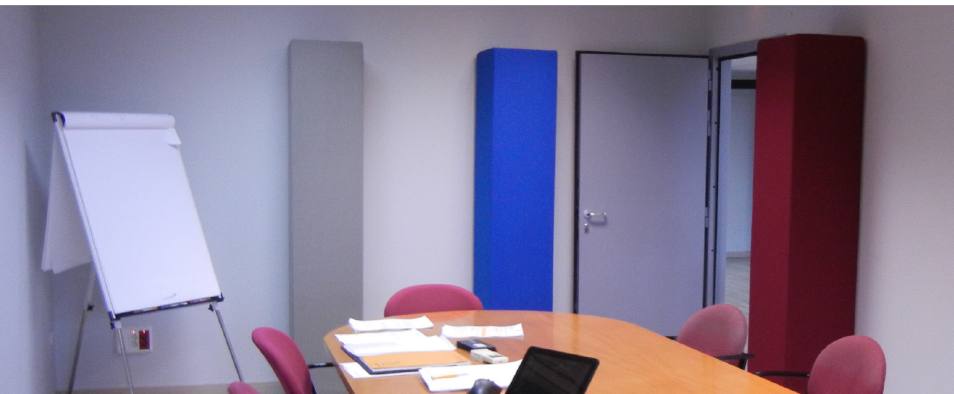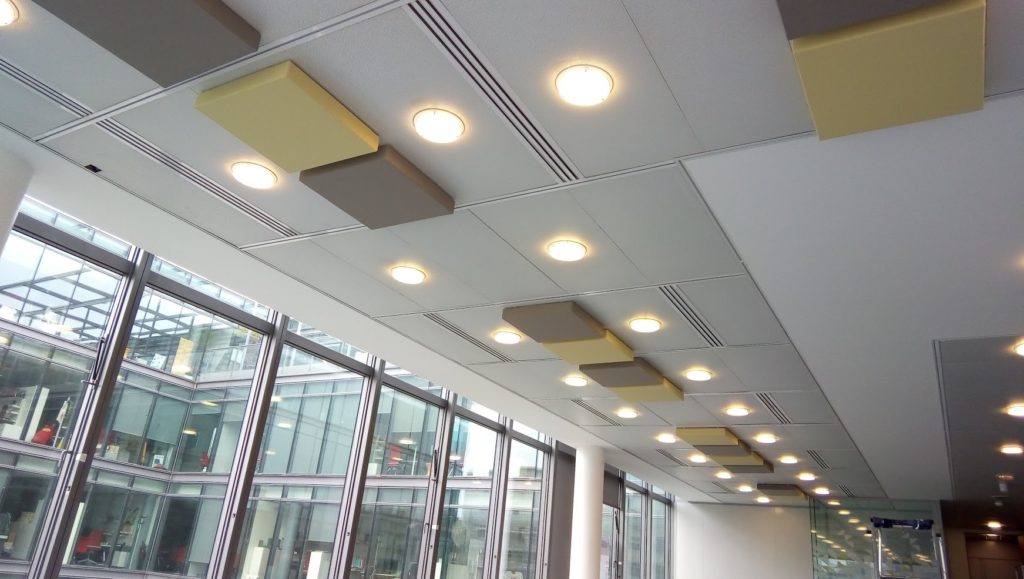Office Speech Privacy
Good Office Acoustics
It is a well known fact that high levels of noise in an office environment have a negative impact on the organisation with respect to increased stress levels, efficiency, discomfort and ultimately the profit margins.
Large and open plan offices are often particularly bad and a study by Pejtersen et al., 20061 found that ten times as many employees complained about noise in these spaces compared with those in smaller cellular office spaces. Complaints from staff usually arise from:
- intrusive external noise i.e. traffic
- high internal noise levels i.e. talking, phones
- internal noise levels from HVAC and other service systems
- poor speech intelligibility
- lack of privacy
- inadequate sound insulation between offices.
Acoustic comfort in offices
If noise levels in office spaces are too high then productivity will suffer because it is harder for staff members to concentrate.
On the other hand, if noise levels are particularly low then speech privacy can become an issue. BS 8233 suggests that a good indoor ambient noise level within cellular office spaces should be in the range of 40 to 50 dB LAeq with meeting rooms and executive offices in the range of 35 to 40 dB LAeq.
Privacy between office spaces requires good sound insulation and moderate background noise to mask intruding speech.
The minimum level of sound insulation generally required between two offices is in the order of 38dB.
Where privacy is important this rises to around 48dB, and even then it is likely that although conversation will still be heard it will not usually be understood.
BS 8233 gives a rough guide where speech will be audible but not intelligible if Dw+LA>75, where Dw is the weighted level difference between rooms, and LA is the indoor ambient noise level in the room.
Acoustic Terminology:
Rw is a laboratory test value provided by many manufacturers.
It does not include for onsite flanking noise leakage.
It is the Weighted Sound Reduction Index, a single figure value at 500Hz. Because this figure is laboratory measured, real world onsite figures will usually be 5dB to 10dB lower than an Rw figure.
R’w is the Apparent Sound Reduction index. It is based on the Rw principle above but is a value measured onsite and includes for flanking noise leakage. It is not often used.
Dw is the Weighted Sound Level Difference. It is a value measured onsite and is the difference between the sound level in the source room minus the sound level in the receiving room.
It does not include for the reverberation time but does include for flanking noise leakage.
DnTw is pretty much the same as Dw but allows for the normalisation of the reverberation times.
Design Considerations
Generally the ceilings in an office have the greatest impact on the internal acoustic environment, especially in open plan offices.
A few screens and some acoustic panels on the wall won’t make a huge difference if the ceiling is acoustically reflective.
The background noise level plays an important part in office acoustic design.
It provides a ‘masking’ effect. Normal speech needs to be between 10dB and 15dB above this noise floor for effective communication.
Typical background noise levels in offices are between 40dBA and 50dBA and can be taken advantage of when designing acoustic office partitions.
Many office partitions simply go up to the T24 ceiling grid and not the structural ceiling. This means that noise will simply pass easily over the top.
Unless this path is acoustically treated the partition will not perform well no matter how high it is rated.
The same applies to shared ventilation ducting. If there are no inline silencers between shared duct runs then noise will simply travel between two office through that route.

Glass partitions are notoriously bad for office speech privacy. They look great but often have gaps between the glass sections, gaps around the glass doors and generally perform poorly from an acoustic point of view.
High performance glass partitions are available …but at much greater cost.
Beware of Rw figures. Due to flanking noise, an Rw value will always perform lower (by sometimes 10dB) when the partition is installed onsite.
If you install an Rw 50dB system don’t expect to achieve Dw 50dB onsite when completed.
The flanking issues, the size of the rooms, the size of the partiton and the reverberation times all come into play onsite which somewhat complicates things.
Rw should be used as a guide value only and a safety margin should be added to it depending on the situation if you want to end up with something that works.
Speech Privacy
The Speech Privacy Potential (SPP) is a measure of speech privacy. It is the product of the sound reduction value of the partition and the background sound level.
A value of 75 should be a minimum target whereby although you can tell that someone is in the adjacent office you cannot understand the conversation.
An even better target would be 85 where raised voices would be barely audible and certainly unintelligible.
An example of a higher performing Rw 56dB internal office acoustic partition combines VL65 acoustic membrane with plasterboard.
Controlling noise in open-plan offices
Open-plan offices are notoriously difficult to acoustically treat using only a single method.
Screened work stations can be employed to give anything between 15dB and 25dB of noise reduction depending on height, spacing and local environment but other measures such as soft floor coverings, low acoustic ceilings and acoustic wall panels are often required as well.
It’s a good idea to keep servers, copiers and other noisy equipment either screened off or in a separate room. The reverberation time should be low and interfering acoustic reflections from hard surfaces should be treated to improve speech intelligibility if they arrive after about 50ms.



